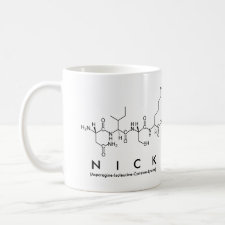
Authors: Turner NW, Wright BE, Hlady V, Britt DW
Article Title: Formation of protein molecular imprints within Langmuir monolayers: A quartz crystal microbalance study.
Publication date: 2007
Journal: Journal of Colloid and Interface Science
Volume: 308
Issue: (1)
Page numbers: 71-80.
DOI: 10.1016/j.jcis.2006.12.037
Alternative URL: http://www.pubmedcentral.nih.gov/articlerender.fcgi?artid=2632306
Abstract: Protein imprinting leading to enhanced rebinding of ferritin to ternary lipid monolayers is demonstrated using a quartz crystal microbalance. Monolayers consisting of cationic dioctadecyldimethylammonium bromide, non-ionic methyl stearate, and poly(ethylene glycol) bearing phospholipids were imprinted with ferritin at the air/water interface of a Langmuir-Blodgett trough and transferred hydrated to hydrophobic substrates for study. This immobilization was shown by fluorescence correlation spectroscopy to significantly hinder any further diffusion of lipids, while rebinding studies demonstrated up to a six-fold increase in ferritin adsorption to imprinted versus control monolayers. A diminished rebinding of ferritin to its imprint was observed through pH reduction to below the protein isoelectric point, demonstrating the electrostatic nature of the interaction. Rebinding to films where imprint pockets remained occupied by the template protein was also minimal. Studies with a smaller acidic protein revealed the importance of the steric influence of poly(ethylene glycol) in forming the protein binding pockets, as albumin-imprinted monolayers showed low binding of ferritin, while ferritin-imprinted monolayers readily accommodated albumin. The controllable structure-function relationship and limitations of this system are discussed with respect to the application of protein imprinting in sensor development as well as fundamental studies of proteins at dynamic interfaces
Template and target information: protein, ferritin
Author keywords: protein adsorption, molecular imprinting, Langmuir monolayer, Mixed monolayer, quartz crystal microbalance, QCM, Fluorescence correlation spectroscopy, FCS, poly(ethylene glycol), PEG, Ferritin



Join the Society for Molecular Imprinting

New items RSS feed
Sign-up for e-mail updates:
Choose between receiving an occasional newsletter or more frequent e-mail alerts.
Click here to go to the sign-up page.
Is your name elemental or peptidic? Enter your name and find out by clicking either of the buttons below!
Other products you may like:
 MIPdatabase
MIPdatabase









